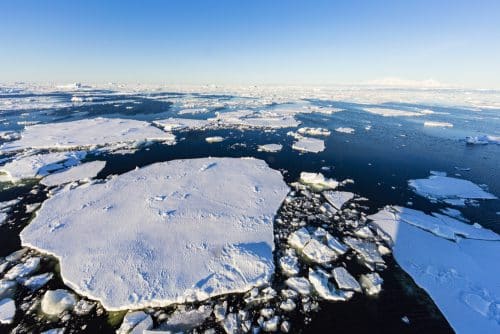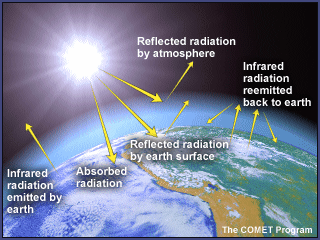The heat wave that hit the Northern Hemisphere in the summer of 2019 was one of the worst in history. Records were broken, glaciers melted and people died. Is this what awaits us from now on?

By Yael Mor, Angle - news agency for science and the environment
In July 2019, during the heat wave that hit Israel, a record temperature of 49.9 degrees Celsius was measured in the Sodom area, the highest measured in Israel since 1942. According to the meteorological service, in addition to Sodom, several other heat records were recorded throughout the country, such as the temperature measured in Hezva, 48.5 degrees Celsius, which is the highest measured at this station since the beginning of its activity in 1988. Of course, Israel is not alone in the campaign against the heat. The World Meteorological Organization has announced that the years 2019-2015 will likely be considered the five hottest years in history. Historical heat records were measured in France, Germany, the Netherlands, Greenland and other European countries. The organization added that in the coming years, heat waves in Europe are expected to be longer, have higher temperatures and appear more frequently.
The hottest day in French history
The heat records recorded in Europe, for example, led to huge fires in Spain, and as happened in previous heat waves, an increase in the number of deaths that will be reported in the coming weeks across the continent as a result of the effects of the intense heat is expected. June 2019, for example, was the hottest June since regular measurements began. The global average was 15.5 degrees, 0.95 degrees higher than the average throughout the 20th century, while in the normally cold regions (such as Russia and Alaska) the average temperature increased by almost 3 degrees. The highest jump was recorded in the Canadian town of Alert, the northernmost permanent settlement on Earth. There, instead of 6-3 degrees on a normal day, the thermometer climbed to 21 degrees.
Residents in a large part of the eastern and central United States faced a sharp increase in temperatures during last July, which approached 38 degrees Celsius. So far at least 6 people have died, and New York declared a state of emergency in those days. On July 25, the hottest day in the city's history was recorded in Paris, France, with 42.6 degrees Celsius, when the previous record was 40.4 degrees Celsius in July of 1947. In the current heat wave, at least five people have died in France and unfortunately this number is expected to rise.
In Greenland, the heat waves of the month of July led to melting processes in half of the area covered by ice on the island, when the runoff into the sea caused by this melting is equal to a rise of 0.5 mm in the global sea level in the month of July alone (when the annual rate of sea level rise today is 3.3 m "m per year). According to reports, on Thursday August 1st, about 11 billion tons of ice melted, equivalent to 4.4 million Olympic swimming pools in just one day. Greenland today is the biggest contributor to sea level rise, which threatens to damage infrastructure and destroy property in the coastal areas, displace residents from their homes and cause heavy financial damages. The National Meteorological Agency of Japan called on the public to lower the temperatures of the home air conditioning and to drink more, due to the deadly heat wave that has so far claimed the lives of 57 citizens and another 18 thousand who have been hospitalized. This heat wave started on July 29. Japan's environment ministry has warned that such extreme heat conditions could become the norm rather than the exception if measures against global warming are not taken.
NOAA scientists, the US National Oceanic and Atmospheric Administration, reported that July was the 414th consecutive month in which the average global temperature exceeded the long-term average (nine of the ten warmest Junes have been recorded since 2010).
The World Weather Attribution (WWA) organization - a group that conducts rapid scientific analyzes of extreme weather events to check whether they are affected by global climate change - determined that the July heat wave in Europe was so extreme that it was unlikely that it would have occurred without climate change.
A model that examined heat waves in France in real time during June 2019 showed that heat waves are becoming more frequent, at least five times, and hotter because of the climate crisis. In combination with other factors, such as the aging of the population, their effect on humans will be more deadly. A similar conclusion is reached by another study which showed that heat is the weather variable that is responsible for the highest number of deaths in the USA and that the characteristics of construction in cities only worsen the phenomenon. The urban heat islands maintain high temperatures even after sunset and it turns out that high temperatures even at night make it difficult for the body to recover and may increase the risks of injury and even death in heat sensitive populations.
Not only Europe suffered from extreme weather events. In Mexico, a rare case was recorded during the hot summer season, during which a hail storm hit the city of Guadalajara and as a result the hail piled up to a height of more than a meter in a few hours. A hot summer, sometimes accompanied by hail storms, characterizes the normal weather in this region of northwestern Mexico, but such a powerful hail storm has never been recorded in this region. In Alaska, the coldest state in the United States, a new heat record of 32 degrees was recorded in Anchorage, the largest city in the country.
The isotopic signature of human activity
"The changes that are happening can definitely be linked to the greenhouse effect," says Prof. Yohai Caspi, from the Department of Earth and Planetary Sciences at the Weizmann Institute of Science. "In the last 50 years, the Earth has warmed by an average of 0.8 degrees. We know that the average temperature is rising, but it is a small value - less than one degree, and not something that you can really feel when you go to the sea. It is very difficult to notice the difference between 40 and 41 degrees, but there are many things that do happen as a result of this change and they are significant." It should be remembered that the average does not reflect the extreme values well and while the average increase in the global temperature is a little less than a degree Celsius since 1880, here in Israel only in the last 30 years the average temperature has increased by 1.8 degrees Celsius and the sea surface temperature in the eastern Mediterranean has increased by 3 ° C. Even at the poles, the rate of change is much faster than the global average.

The greenhouse effect is a process in which heat is trapped inside the Earth's atmosphere due to the gases that surround it and do not allow the heat to escape, but return it to the face of the Earth. According to the models accepted today, the main cause of this effect and global warming are greenhouse gases, the most familiar of which is carbon dioxide. "In the measurements of carbon dioxide in the atmosphere we can see that its concentration increases at a constant rate. We know that before the industrial revolution, the amount of carbon dioxide particles in the air was approximately 280 parts per million, which means that for every million parts in the atmosphere, 280 of them were carbon dioxide (this is in addition to other gases such as nitrogen, oxygen and others that are in the air, Y.M.) ", says Caspi. "Today, the concentration of carbon dioxide in the air is over 410 parts per million. That is, the number has almost doubled since the industrial revolution. Carbon dioxide is created not only by man, but also by other natural processes, but we know how to identify the isotopic signature of the one created by human activity and we also know that this specific carbon dioxide is increasing in concentration, so we can say for sure that the increase in the greenhouse effect is caused by man".
At WWA, a group of researchers from around the world use computer climate simulations that illustrate the current situation and the situation that could have been if human activity had not poured hundreds of billions of tons of greenhouse gases into the atmosphere. According to analyzes of extreme weather events, which include floods, droughts, extreme rains, cold and more, it was found that the heat waves in Europe are the main ones affected by the climate change that is happening in the world.
"It is clear to everyone that the concentration of carbon dioxide in the air is increasing and that as a result the earth is warming. There is no debate that this will cause the desert strips to expand, and there is no debate that if the amount of carbon dioxide in the air continues to rise, the sea will get warmer and the glaciers will continue to melt at an ever-increasing rate... the result is a worldwide phenomenon that changes everything we are used to experiencing in terms of climate," Caspi concludes.
More of the topic in Hayadan:

2 תגובות
The amount has almost doubled???
410/280 is less than half.
And if such a simple figure is not true, then who knows what else is not accurate in the article.
Everything is the other way around, the melting of the glaciers will increase the amount of fresh water in this way, the currents that carry warm water in the ocean will stop and Europe will cool down and the northern ocean will freeze because the amount of salts will decrease. And it can actually lead to an ice age, which is the cycle on Earth. Only the person may have sped her up.
In any case, there are ways to engineer the weather by simulating volcanoes and injecting sulfur into the stratosphere. The technology exists, you just have to want it. But even if nothing is done and the warming continues it is not the end of the world because even the dinosaurs thrived in a hot and humid world with a lot of carbon dioxide and died because of the cold